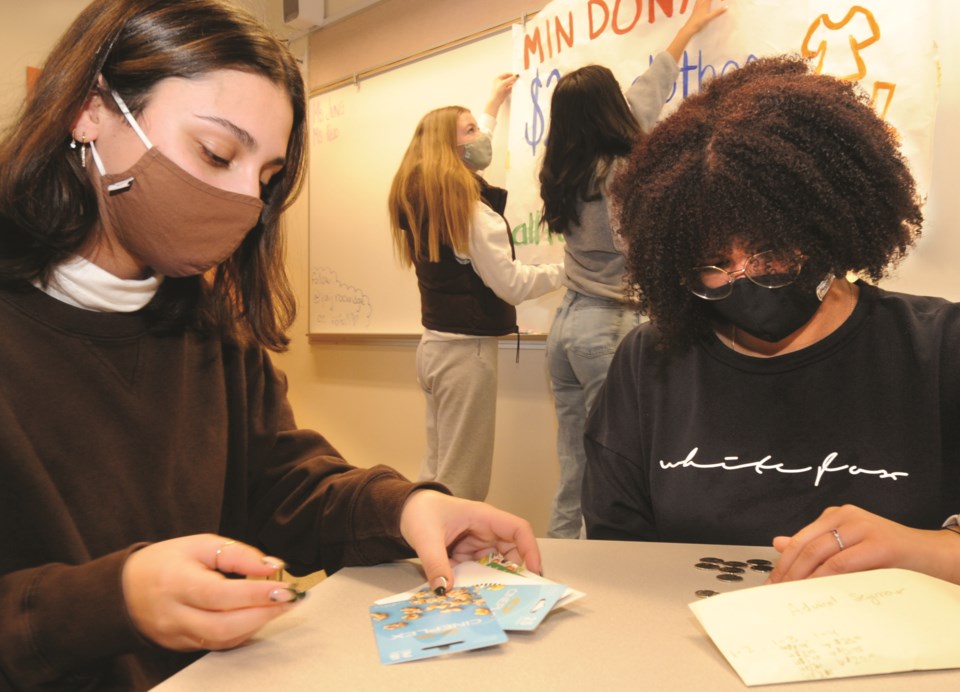Schools can be a place of community, growth, and learning. Extracurriculars, like school clubs and sporting groups, can foster these things in ways classrooms oftentimes can’t. But what happens if you have multiple identities, where neither intentionally cross paths in programming?
That’s exactly what Youth Alliance for Intersectional Justice is trying to correct. In an education system where specific support can be found for students who are racialized or disabled, but not racialized and disabled, co-founder Carolyn Tinglin is trying to connect the two.
“School is just quite an isolating place for a lot of youth. It's tough on most youth, but particularly for racialized youth who have disabilities,” she said.
Tinglin, a Black mother of an autistic son who is also currently undertaking a PhD in education, was at various points over the last few years looking to connect her son, Jantz, to a school group or club where he could be entirely himself.
“I was looking specifically at programs or organizations that offered entrepreneurship opportunities to youth with varying abilities, and or with neuro-variety, who were also from the Black community and from Indigenous nations and could not find a community-based organization that did that,” she said.
Having conversations with Jantz about what such a program could look like, they both knew that the solution needed to be “actionary.”
“We wanted it to be a safe space. I wanted to specifically focus on Black youth as well as Indigenous youth who have been pushed to the margins more so than other youth have,” Tinglin said. “And who, when it comes to research, whether it's autism research, whether it's FASD [fetal alcohol spectrum disorder] research, or Down Syndrome research, you don't hear from racialized youth in those communities.”
Currently operating at West Vancouver’s Rockridge Secondary School, Kimberly Jung, YAIJ advisory council member and English teacher at the school, was able to implement the program that runs every Monday during lunchtime.
“She literally took it and ran with it,” Tinglin said of Jung, adding, “That is the purpose of YAIJ, to take ideas that are relevant and meaningful, and inspired by or directly coming from youth, and bringing them to life.”
According to the West Vancouver School District, 121 students identify as Indigenous; however the district does not collect other data regarding race. The district told the North Shore News approximately 10 per cent of its student body has an Individualized Education Program but could not provide numbers regarding how many of those students are also racialized.
Tinglin notes that often, racialized and disabled youth are not envisioned as people with hopes or aspirations, and more frequently, not thought of at all.
“That's really what we're about, amplifying their voices, facilitating, supporting ideas and projects, and research that they're interested in doing and learning about,” she said.
Incorporating intersectional justice theory, including the principles of history of racism and supremacies, into teaching and education is something Tinglin is passionate about.
“When we talk about intersectional justice, from an educational standpoint, we're really talking about understanding who students are, what their lives are, who they are as people, what their lives are like, and what's relevant to them and teaching with that with those understandings in mind,” she said. “So really pushing for equitable opportunities for youth based on intersectional justice.”
Tinglin said teachers and schools are in a unique position to question the socially constructed categories of race and disability and can “exercise the tools of social justice.”
Practically, Tinglin said the program centres issues that are relevant and important to Black and Indigenous students with disabilities, including entrepreneurship, economics, and harnessing skills for long term financial independence.
“There are young people who don't have parents or adult support, they're literally on their own. And so, they're on their own, but what happens if they're underemployed and they're not able to find consistent work that's meaningful to them?” she asked.
“There is nothing wrong with being a Walmart greeter, if that's what you choose to do. But there are many who don't especially choose to do that, and those are the only options they are offered. So, we see that as being a bit problematic,” she said. “If you choose to do that, that's very different from being pushed into that position simply because of the labels that are attached to you, or that you've been designated.”
Tinglin is hoping to expand YAIJ across the country, not only in schools, but into policy development and economics.
“When a youth finishes high school, typically youth who have either a special education label or they have an IEP are kind of streamed for certain types of jobs. Very low paying, service oriented jobs. So, we're wondering, what are the supportive avenues for youth who don't want service oriented jobs and want to be part of the post-secondary community?” she said.
“If I am a young person and I have FASD, or I have an intellectual disability and I'd like to see what it's like to be in a college botanical course, who makes that happen?”



